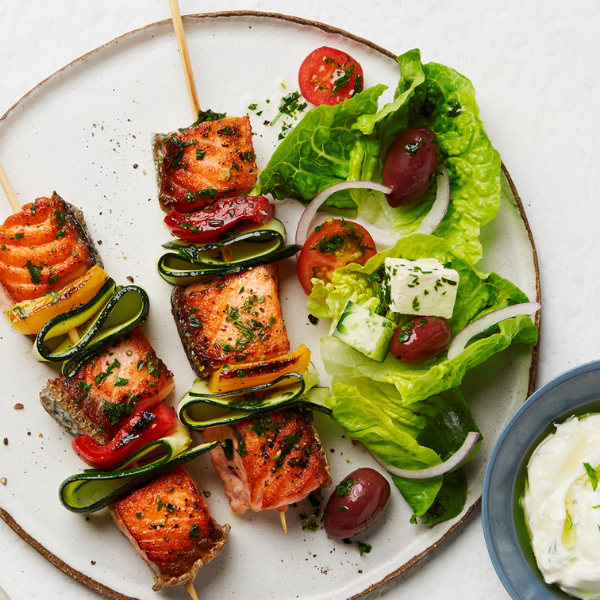Eating for Glowing Skin
Who does not want healthy, glowing skin? While diet cannot fix all the things in our life that we would perhaps like it to, the good news is that when it comes to the look, feel, texture and underlying health of our skin, there is a whole lot that our diets and daily food choices can do.
In fact, our skin cells are one of the body’s more frequently replaced cells, and our overall nutrient intake can very quickly be reflected in the health of our skin. So, if you would not mind a little more glow as we move into the summer months, here are the steps for eating for glowing skin.
Load up on key vitamins
A number of vitamins play a role in skin health including Vitamins C, E and D and as such a diet that is rich in fresh fruits and vegetables, nuts and seeds as well as regular sunlight all have a role to play in skin health. Vitamin C, found in concentrated amounts in citrus fruits, berries, green leafy veggies and kiwi fruit, is involved in the formation of collagen, the tissue that strengthens the skin and improves elasticity and skin appearance. Vitamin C also functions as an antioxidant, helping to protect the body’s cells from damage, damage that can ultimately contribute to the aged look of the skin. Vitamin E too is involved in the formation of collagen, while getting adequate Vitamin D is important to support the body’s natural anti-inflammatory pathways. Inflammation is associated with increasing cellular ageing over time, as well as inflamed and red-looking skin short term.
Focus on Beta Carotene
The precursor to Vitamin A in the body, beta carotene is found in highest concentrations in red and orange fruits and vegetables including tomatoes, red capsicums, carrots and sweet potato and it has a powerful antioxidant role in the body, helping to protect cells, skin cells in particular from the effects of oxidative damage. High amounts of beta carotene accumulate in the cells over time, which is why individuals who eat a few too many carrots can develop skin dis-colouration.
Whilst overconsumption is not encouraged, a regular high intake of beta carotene rich foods, or a couple of serves every day can help to improve the look and colour of the skin thanks to these coloured pigments which accumulate over time, giving skin its right and rosy appearance which is also a broad indicator of carotenoid status in the body.
Boost your intake of Omega-3 rich fish
Omega-3 fat, the type of fat found in largest natural quantities in oily fish like Tassal Tassie Salmon, is associated with a number of skin health related benefits . What may be especially relevant to the health of the skin and fish intake specifically is that in addition to the Omega-3 fat it contains, oily fish is also a good dietary source of Vitamin E. Of the small number of studies available that have examined the effect of diet and the appearance of the skin, it is suggested that it is the synergistic effect of both Vitamin E and Omega-3 fat that may explain a reduction in the appearance of wrinkles in supplementation studies. With fewer than 1 in 10 Australians achieving their daily recommended intake of Omega-3 fat, not only will increasing the average weekly intake of oily fish help to support a reduction in inflammation over time, but it helps to increase intake of a number of other nutrients that have a role to play in new skin cell development and regeneration including zinc and Vitamin E.
Tick the box on zinc
Zinc is an essential nutrient found in small amounts in a handful of foods including seafood, red meat, nuts, wholegrain seeds and legumes. Zinc is intricately involved in new cell development and immune function and it is estimated that up to1 in 10 women and 1 in 3 men do not get their recommended intake of this mineral. When it comes to our skin, zinc plays a role of protein synthesis and in the regeneration of new cells. It also plays an antioxidant role helping to protect the cells from damage over time and in the case of breakouts or pore damage, helps to heal any damaged cells. One of the easiest ways to get optimal amounts of zinc in the diet is to add nutrient rich seafood such as prawns into your diet at least 2-3 times each week. A daily serve of nuts and seeds too will go a long way in ticking the box on your daily requirement of zinc to support immune function and skin health.
Looking for delicious and healthy salmon recipes? Check out our favourite recipes using Tassal Salmon below.
- Salmon Stir Fry with Udon Noodles here
- Herbed salmon with cauliflower rice salad here
- Lemon infused salmon with cous cous here
- Crispy salmon with cherry tomatoes here
Any views and opinions expressed in this blog belong solely to the original author of the opinion and can’t be attributed to the business or their blog.
This blog has been written by Susie Burrell.
References
Calder P. C. (2010). Omega-3 fatty acids and inflammatory processes. Nutrients, 2(3), 355–374. https://doi.org/10.3390/nu2030355
Michalak M, Pierzak M, Kręcisz B, Suliga E. Bioactive Compounds for Skin Health: A Review. Nutrients. 2021 Jan 12;13(1):203. doi: 10.3390/nu13010203. PMID: 33445474; PMCID: PMC7827176.
Huang, T. H., Wang, P. W., Yang, S. C., Chou, W. L., & Fang, J. Y. (2018). Cosmetic and Therapeutic Applications of Fish Oil’s Fatty Acids on the Skin. Marine drugs, 16(8), 256. https://doi.org/10.3390/md16080256
Jenkins G, Wainwright LJ, Holland R, Barrett KE, Casey J. Wrinkle reduction in post-menopausal women consuming a novel oral supplement: a double-blind placebo-controlled randomized study. Int J Cosmet Sci. 2014 Feb;36(1):22-31. doi: 10.1111/ics.12087. Epub 2013 Sep 18. PMID: 23927381; PMCID: PMC4265247.





